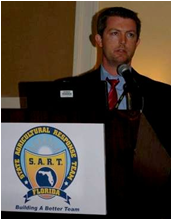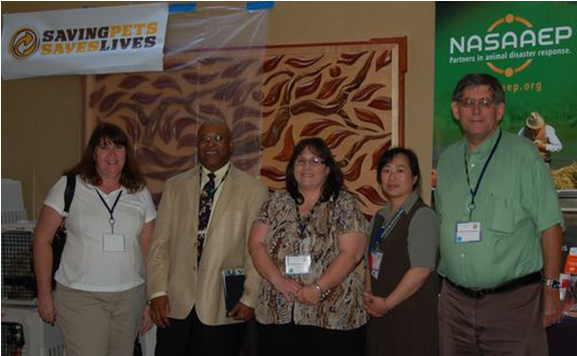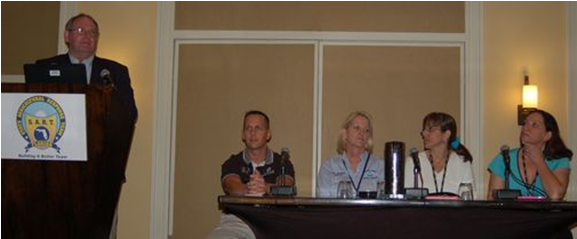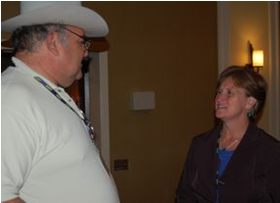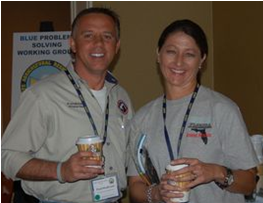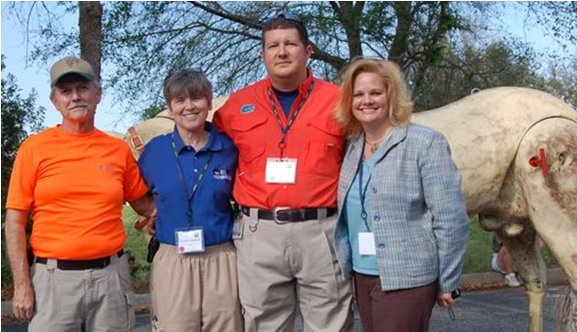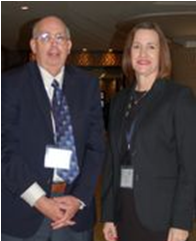
Vol. 7, No. 4, April 2011 |
 Printer-Friendly PDF Version Printer-Friendly PDF Version |
SART Advisory Board Meets in Gainesville
 The Florida Farm Bureau building at 5700 SW 34th St., Gainesville.
The Florida Farm Bureau building at 5700 SW 34th St., Gainesville.
On Wednesday, April 6, at 10:00 a.m. the Florida SART Advisory Board will meet at the Florida Farm Bureau Federation Building, 5700 SW 34th St., Gainesville, FL, (352) 378-8100. Among other pressing issues in the agricultural and animal field, such as the continuing development of Florida SARC, the meeting is expected to cover:
- - a review of the 2011 Planning Meeting
- - a state hurricane exercise (May 23-26)
- - a planned animal/agricultural training exercise
- - discussion of regional SART meetings
- - a national level emergency exercise (based on an earthquake)
- - new SART training courses
- - Governor’s Hurricane Conference (May 16-20)
- - a new design for the SART Web site and
- - SART partner reports, updates and discussions.
The Advisory Board meeting is scheduled to end no later than 2:00 p.m. For questions, contact Joe Kight (850) 410-0920, Joe.Kight@freshfromflorida.com, or Michael Turner (850) 410-6761, Michael.Turner@freshfromflorida.com.
[top]
SART 2011 Planning Meeting Recap
"Building A Better Team"
MONDAY
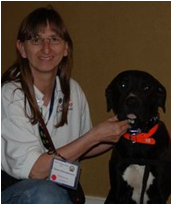 Carol Cristopherson and Tank represented Florida Service Dogs, Inc. in Duval County. Carol says she worked in the aftermath of hurricanes Charlie and Katrina and describes herself as “a dog person.” | Called “Joe-isms” our ESF-17 ECO leader, Joe Kight, gave us several useful quotes on Day 1 of the Planning Meeting. “If you don’t have it, partner.” |  But didn’t he just retire? Former FDACS employee Gary Painter (r) of Bartow, now officially a volunteer, discusses Planning Meeting protocols with FDACS/DAI’s Dana DeJarnatt on Day 1. |
Note: Florida Service Dogs, Inc., P.O. Box 14810, Jacksonville, FL 32238 “provides education, advocacy and professionally trained service animals for qualified persons with disabilities” and more. www.floridaservicedogs.net
 Dr. Thomas Holt, Florida State Veterinarian (l) and Dr. Chester Gipson, USDA/VS/Animal Care discuss the NCAA basketball playoffs. | 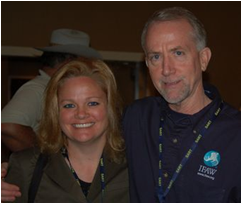 Dr. Heather Case, AVMA/VMAT (r) and Dr. Dick Greene, IFAW. Old friends catch up on NASAAEP and changes in response training. |
"The second most common reason people would not evacuate prior to and in the aftermath of Hurricane Katrina was that rescue and response agencies would not accommodate their pets," said Dr. Chester Gipson, USDA. "The first reason was that they simply didn't want to go!" | |
“The difference between an emergency and a disaster,” Gwen Keenan said, “is that in an emergency, there are more responders than survivors. In a disaster, there are more survivors than responders.”
TUESDAY
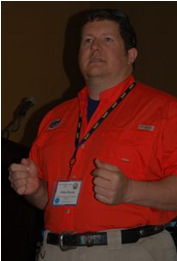 | The morning session for the Planning Meeting divided into three groups. John Haven(l) and Sue Rantuccio (r) led the Blue Group: Problem Solving – Animal Care. |  |
Blue Group: Local planning groups can use SART MARE Units for exercises. Use does not require a governor-declared emergency. A MARE, or Mobile Animal Response Equipment Unit, is a 16-foot open-sided steel livestock trailer stocked with small animal response necessities. Units were purchased for each of Florida’s seven law enforcement response regions through a Homeland Security grant for developing regional resources.
Red Group: Kendra Stauffer and Laura Bevan led the Problem Solving – Search and Rescue session. Highlighting the issues, Palm Beach County’s Michele Fox noted, “You can try to educate people all day, but it’s hard to overcome attitudes such as, ‘Why should I pay for all the vet bills and evacuation and supplies for these animals when it’s cheaper just to turn them loose and go to an auction later and buy new ones?’”
Green Group: Dr. Greg Christy and Anne Vuxton led the Problem Solving – Transportation and Sheltering Working Group. Award winning Sumter DART volunteer Ronnie Graves said that it was especially important to make clear that trained volunteer responders don’t come into an emergency with the intent of taking over a situation: “Our job is to work with the people who are affected and in harm’s way, the folks on the ground on site.”
 Planning meeting co-chair Dr. Joan Dusky (r) with UF's Dr. Amanda Hodgesin the parking lot for the Large Animal Technical Rescue equipment demonstration presented by the UF Vet School's John Haven and Dr. Cynda Crawford. "Unless you have conversations ahead of time," Dusky says, "you won't have time for them during an emergency. We don't want people introducing themselves during an emergency. Florida is a sentinel state with a $133 billion agricultural industry and 75 million tourists a year. Things here can happen quickly." | 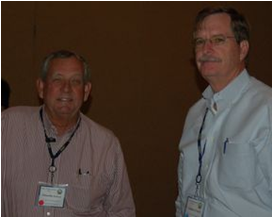 Citrus Extension Agent Tim Garver, St. Lucie County (l) and Dr. Stephen Futch, Interim Desoto County Extension Director, discuss emergency planning. "I have not been involved with SART until this meeting," Futch says. "I was surprised at the massive amount of work that goes into the planning process and the services provided by the different agencies involved." More than 200 people registered for the 2011 SART Planning Meeting which was held over three days – Monday, February 28, through noon, Wednesday, March 2. |
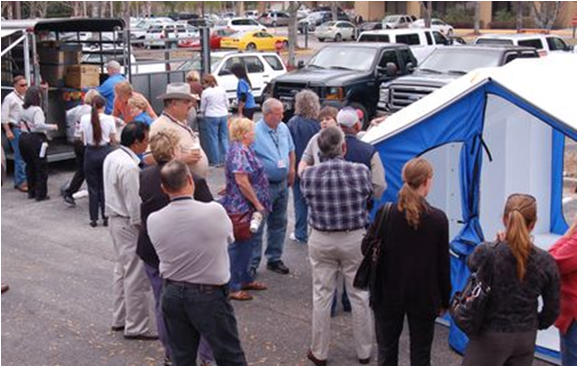 Afternoon: Exhibits of animal response equipment in the hotel's parking lot. |
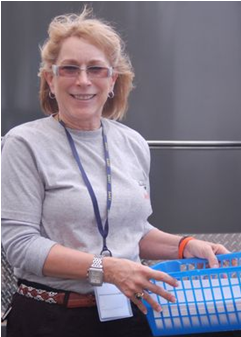 BAY Area DART member Patricia Rechnitzassisted with the Tuesday afternoon session outdoors. The fundamentals of first aid? "Err on the side of Do No Harm," Recnhitz said, echoing commentary by Dr. Jenifer Chatfield. |  FDACS' Dr. Karen McKenzieparticipated in Dr. Jenifer Chatfield's afternoon session on Animal Emergency Care. McKenzie had recently worked on Florida's cormorant END incident (Exotic Newcastle Disease). |
WENDESDAY
The Puerto Rican dog incident involved many disaster response groups including the ASPCA, Sumter DART, Bay Area DART, the UF Vets Team, FVMA Vet Corps, and the Maddie’s Shelter Program at UF. “We are proud of the outcome,” said Dr. Cynda Crawford in summary. “We would do it again. We believe that we averted a national or at least a regional disaster where thousands of dogs could have become infected.”
Watch for additional photos and commentary from the 2011 SART Planning Meetings plus a complete wrap-up of the April 6 Advisory Board Meeting in the next issue of the Florida SART Sentinel.
[top]
2011 Agroterrorism Preparedness Classes
FDACS’ Office of Agricultural Emergency Preparedness collaborates with several training partners to offer DHS-certified courses in Florida. All courses are open to United States citizens and are free of charge through DHS grant funding.
Training partners include the Western Institute of Food Safety and Security at the University of California-Davis (WIFSS), the Center for Agriculture and Food Safety and Preparedness at the University of Tennessee-College of Veterinary Medicine, the University of Florida-Institute for Food and Agricultural Sciences, and the Regional Domestic Security Task Forces.
WIFSS-PRESENTED COURSES
To register for one of the AWR courses or for more information: http://wifss.ucdavis.edu/agroterrorism/classes/classesbydate.php
AWR-151
Understanding the Dangers of Agroterrorism
A ½-day introductory course on the topic of agroterrorism, aimed at raising awareness of the need to identify and defend against pathogens, chemical and biological contaminants, and other hazards that affect food safety. The course stresses the importance of responding to incidents of intentional contamination as well as natural disasters using the “all hazards” approach. This training has been approved for 3.5 CEUs for Certified Environmental Health Professionals.
Thursday, April 7
Winter Haven
Polk State College Learning Center WLR 104, 999 Ave. H NE, Winter Haven. (Registration at 1:00 p.m. The workshop runs from 1:30 - 4:30 p.m.)
Wednesday, May 18
(By invitation only).
AWR-155
Principles of Frontline Response to Agroterrorism
and Food Systems’ Disasters
A 1-day course focusing on how an effective frontline emergency response can reduce or mitigate the effects of an agricultural emergency, an act of agroterrorism or other food system disaster. Frontline agricultural and public safety response teams, including personnel from the county, regional, state and federal agencies, receive a comprehensive program formed around the principles of the Incident Command System (ICS) and the concept of Unified Command. This training has been approved for 5.0 CEUs for Certified Environmental Health Professionals.
Wednesday, April 20
Miami
Regional Operations Center, FDLE Bldg., 1030 NW 111th Ave.
Wednesday, May 11
Ft. Myers
Lee County Port Authority Training Facility, 15924 Air Cargo Lane
Thursday, May 12
Sarasota
Sarasota County Govt. Administration Center EOC, 6th Floor 1660 Ringling Blvd.
AWR-156
Principles of Planning and Implementing Recovery
A 1-day course focusing on the fundamental framework for orchestrating the recovery from an incident of agroterrorism. The course covers critical factors for success in a community recovery effort: identification of the components of a recovery plan targeted at minimizing the economic impact to the community and its citizens, and the identification of community resources and assets available for building partnerships. This training has been approved for 6.0 CEUs for Certified Environmental Health Professionals.
Thursday, April 21
Homestead
Miami-Dade Extension Office Agricultural Center, 18710 SW 288th St.
Wednesday, June 8
Seffner
Hillsborough County Extension Office, 5339 S County Road 579
Thursday, June 9
Sanford
Seminole County EOC, Dept. of Public Safety, 150 Bush Blvd.,
UNIVERSITY OF TENNESSEE-PRESENTED COURSES
To register for one of the MGT courses or for more information: http://flsart.org/mgtcourses/.
MGT 337
Agriculture & Food Vulnerability Assessment
(Utilizing the Carver + Shock method)
A 1 ½ day course (Day 1 from 8:00 a.m. to 5:00 p.m. with one hour for lunch and Day 2 from 8:00 a.m. to 1:00 p.m.) to assist food regulation, law enforcement, and industry personnel in the prevention and deterrence of criminal acts that target the food industry. Registration through John Burkette, FDACS Office of Agricultural Emergency Preparedness: (850) 245-1387, John.Burkette@freshfromflorida.com, or go to http://flsart.org/mgtcourses/ for information and links to online registration.
Tuesday-Wednesday, April 26-27
Miami: At the FDLE facility, 1030 NW 111th Ave.
Tuesday-Wednesday, May 10-11
Sanford: Seminole County Sheriff’s Office, 150 Bush Blvd.
MGT (Course # Not Assigned)
Sharing Information and Intelligence
Related to Food Importation and Transportation
A 1-day course (8:00 a.m. to 5:00 p.m. with one hour for lunch) to prepare participants to utilize and implement effective sharing of information and intelligence to enhance food safety and security related to food importation and transportation. This course is targeted for law enforcement, state Fusion Center personnel, emergency managers and responders, extension, public health, food and agriculture professionals, the transportation industry and federal, state, local, tribal and regional officials. Registration through John Burkette, FDACS Office of Agricultural Emergency Preparedness: (850) 245-1387, John.Burkette@freshfromflorida.com or go to http://flsart.org/mgtcourses/ for information and links to online registration.
Thursday, May 26
Winter Haven
Polk State College, 999 Ave. H NE, Student Center WST 126.
Tuesday, June 28
Jacksonville
At the FDLE facility, 921 N Davis Street, Bldg. E.
[top]
Important to Note
1. On the Agenda
April 6: The Florida SART Advisory Board will meet at 10:00 a.m. in the Board Room of the Florida Farm Bureau Federation Building in Gainesville. Contact Joe Kight, FDACS/DAI, ESF-17 ECO (850) 410-0920, Joe.Kight@freshfromflorida.com, or Michael Turner (850) 410-6761, Michael.Turner@freshfromflorida.com.
May 15-20: The 2011 Governor’s Hurricane Conference, www.flghc.org, will be held at the Ft. Lauderdale-Broward County Convention Center.
May 23-26: Florida Statewide Hurricane Exercise, Hurricane Griffin.
September 14: The Florida SART Advisory Board is scheduled to meet at 10:00 a.m. in the Board Room of the Florida Farm Bureau, which is adjacent to Interstate 75 in south Gainesville.
2. The Changing Face of Florida Agriculture - Goats
So what do you know about goats? Florida’s livestock growth industry is goats for meat and dairy.

Cindy Sanders, Alachua County Extension Director and Livestock Agent, says that with an estimated 3,201 head, her county is #2 in the state for goats. Of the 182 producers, most raise meat animals for the South Florida Hispanic market. Only 10 to 15 percent actually raise goats for milk, cheese and butter, which is much more work.
Sanders notes that raising goats may also qualify a property for a “Green Belt,” or agricultural exemption for the purposes of property taxes. Such an exemption provides for a “value-in-use” rather than a “market-value” appraisal, which can lower property taxes by thousands of dollars annually. Value-in-use allows property to be taxed based upon what the current use will generate as income, rather than what it could be sold for.
According to the USDA Census of Agriculture, the top goat-producing counties in Florida are – county/head:
1. Marion – 3448 7.Clay – 1860
2.Alachua – 3201 8.Columbia – 1844
3.Volusia – 2201
9.Polk – 1853
4.Hillsborough – 2157 10.Lake – 1841
5.Gilchrist – 2152
11.Hernando – 1842;
6.Lee – 1893
12.Levy – 1682
Of Florida’s 57,696 goats in 2007 – up from 39,964 in 2002 – 6,632 were milk goats (11.5 percent), 50,828 were raised for slaughter and the sale of their meat (88.1 percent), and the balance were Angora (mohair producing) goats.
A small ruminant program has been established at Florida A&M University in Tallahassee. It provides education for goat and sheep producers and can be accessed on the Web at http://www.famu.edu/cesta/main/index.cfm/cooperative-extension-program/agriculture/small-ruminant/about-the-small-ruminant-program/.
The Small Ruminant Program Web site is maintained by Angela McKenzie-Jakes, Extension Animal Science Specialist and Program Leader for the Small Ruminant Program at Florida A & M University, Cooperative Extension Program:
angela.mckenziejakes@famu.edu, (850) 875-8552.

What is a service animal and how does it differ from a companion animal? Can a horse reasonably be trained to work or perform tasks for the benefit of a disabled individual? Even a miniature horse? Can a monkey or a cat?
3.So, what exactly is a "service animal"?
On July 23, 2010, Attorney General Eric Holder released a new definition of "service animal."
A service dog is now defined as "any dog that is individually trained to do work or perform tasks" for the benefit of an individual with a disability, including a physical, sensory, psychiatric, intellectual, or other mental disability.
With the exception of miniature horses (!), other species of animals, whether wild or domestic, trained or untrained, are not service animals for the purposes of this new definition…unless someone is climbing on board a federally-regulated conveyance…which is practically every means of public transportation other than the privately owned vehicle.
This provision was added after testimony from the AVMA, which issued a position statement advising against the inclusion of monkeys as service animals.
The new definition insists that the service animal’s "work or tasks" performed must be directly related to the handler's disability.
This eliminates people who, for instance, claim their pet can discern their handler’s distress but can’t do anything in response to it, which is what distinguishes true service animals.
The new definition specifically spells out that the "crime deterrent” effects of an animal's presence (an unsociable dog, for instance) and the “provision of emotional support, well-being, comfort or companionship do not constitute work or tasks for the purposes of this new definition."
The new definition gives public entities more specific – some might say, “common sense” – exceptions. People can be asked to remove their animals if the animal is out of control or is not housebroken.
So the editors ask, “Is this furor caused by licking too many postage stamps in an unventilated office” or is this a truly serious matter for public discussion? Let us know what you think by sending your thoughts and feedback to The Editors at rsa5@cox.net. (The above is based on a story in the www.StatesmanJournal.com, March 3, 2011).
4. CPG 101: Developing & Maintaining Emergency Operations Plans
FEMA’s Comprehensive Preparedness Guide 101 (Version 2.0) is online at http://www.fema.gov/pdf/about/divisions/npd/CPG_101_V2.pdf. It is signed by Florida’s own Craig Fugate, FEMA Administrator, and dated November 2010.
“CPG 101 is the foundation for state, territorial, tribal, and local emergency planning in the United States,” write the FEMA planners. “Planners in other disciplines, organizations, and the private sector, as well as other levels of government, may find this Guide useful in the development of their EOPs.”
5. APHIS Helps Secure Felony Conviction

APHIS Investigative and Enforcement Services recently helped the U.S. Attorney for South Florida secure its first felony conviction under the Plant Protection Act. Prime Airport Services, a ground cargo handler at Miami International Airport, was ordered to pay a $1 million fine – and $800 court fees.
The fines were based on multiple infractions: “unauthorized movement of articles from the port of entry, unauthorized movement and subsequent release of commodities known to be infested with plant pests, failure to destroy commodities as ordered, failure to provide prescribed fumigations as ordered, and failure to re-export commodities as ordered.”
For more information on IES, go to www.aphis.usda.gov/ies/.
[top]
About the SART Sentinel |
The SART Sentinel is an e-mail newsletter prepared monthly by the members of the Florida State Agricultural Response Team. Past issues of the Sentinel are archived on the Florida SART Web Site www.flsart.org. If you have a story or photo that you would like to have considered for publication in the SART Sentinel, please contact the editors. Editor: Rick Sapp, PhD, Technical Writer, Florida Department of Agriculture & Consumer Services, Division of Animal Industry rsa5@cox.net Associate Editor: Joe Kight, State ESF-17 Coordinator, Florida Department of Agriculture & Consumer Services, Division of Animal Industry Joe.Kight@freshfromflorida.com [top] |

